Love your ZZ plant, but are frustrated by its stubborn tilt? Fix the root cause of this issue and learn how to grow a straight ZZ plant!
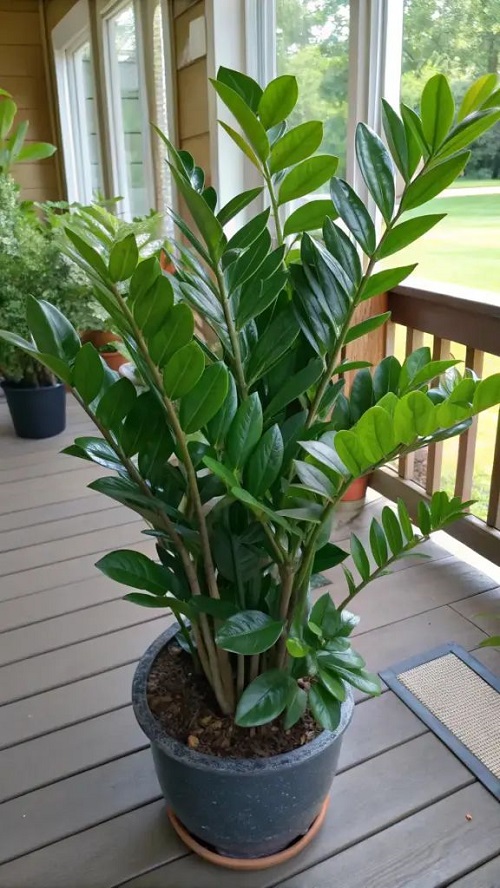
The ZZ plant (Zamioculcas zamiifolia) is loved for its glossy leaves, bold structure, and easy-going nature. It can handle neglect like a champ, but one thing often frustrates plant parents—a leaning or floppy ZZ plant. Let’s find out why it happens and how to fix it for good.
Reasons for the Tilt and Solutions
A ZZ plant may not grow directly upward due to a plethora of reasons. Each one has a different fix. Therefore, it is essential for you to identify the cause and take appropriate measures to resolve it.
Before fixing anything, gently check whether the stem is firm or mushy at the base. A firm stem usually indicates a simple care issue, while a mushy base is a sign of rot and needs urgent attention.
1. Imbalanced Sunlight Exposure
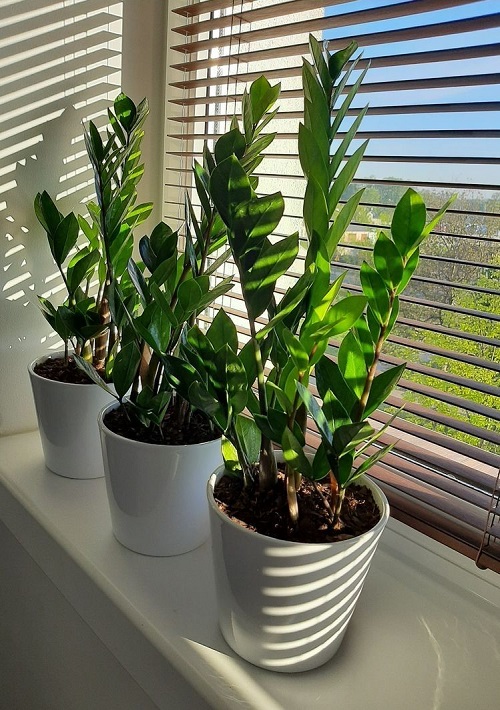
Did you know that most plants exhibit a fascinating trait called phototropism, in which they completely alter their physical form to get close to the source of light? This may be the very reason causing a bend in your ZZ plant! If only one portion of your ZZ plant is exposed to sunlight, it tends to bend in that direction.
Also, if your plant is placed in a dark corner or far from a window, it may stretch toward any available light and appear weak and floppy.
Solution
You can rotate the pot 90° every two weeks so all sides get equal light. If your space is dim, use a grow light placed 10–12 inches above the plant.
2. Overwatering Leading to Stability Issues
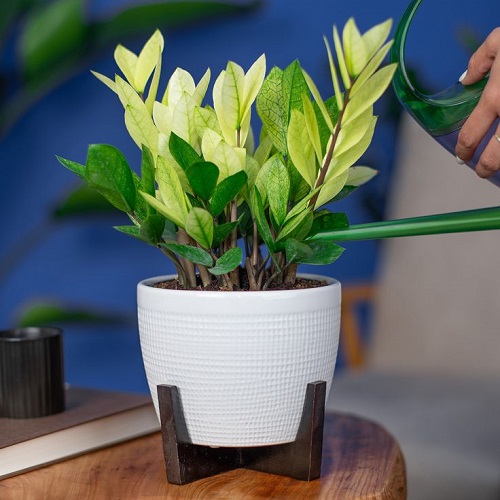
ZZ plant may not look like a textbook succulent, but it doesn’t mean it will survive in soggy soil. The key to an upright ZZ plant is well-draining soil. An oversaturated substrate will lead to root rot and a weak root system. This will affect the structural integrity of the entire plant and may cause it to lean or droop.
Solution
Anything given in excess is poison! So tone down the watering frequency and use the right potting mix. A rule of thumb is to thoroughly soak the soil and then allow it to dry entirely before repeating the process.
Also, the perfect potting mix would be sandy and rich in organic matter. If you can’t find that, any high-quality succulent mix will do.
3. Thirsty Plant, Leaning Form
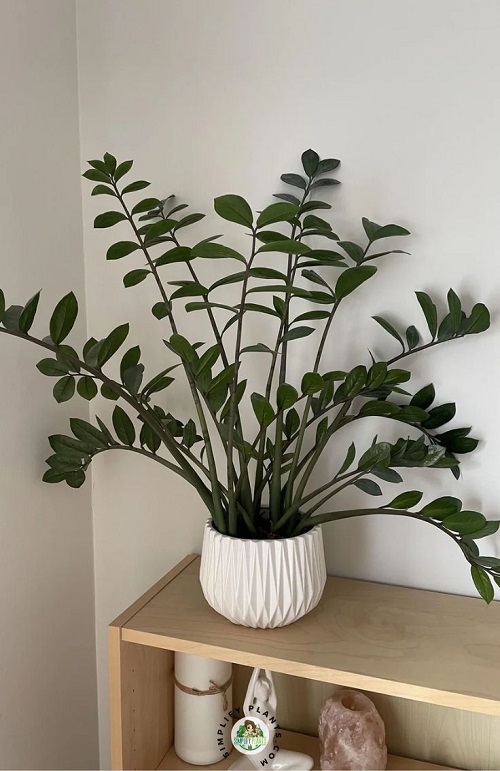
The complete opposite of the previous scenario. When your plant is not hydrated enough, it is unable to absorb enough nutrients. This undernourishment can force the plant to shrivel or bend. Although the signs may be minimal in the beginning, it is necessary to listen to the plant’s cries for water early on.
Solution
It is important to maintain a balance between over- and underwatering. The watering method mentioned in the previous solution stands valid here as well. Also, a pro tip is that since ZZ plants have rhizomes that store water, try targeting the soil directly rather than splashing the leaves as well.
If you’re unsure when to water, check the top 2–3 inches of soil—if it’s completely dry, it’s time to water.
4. Wrong Pot Size is the Culprit
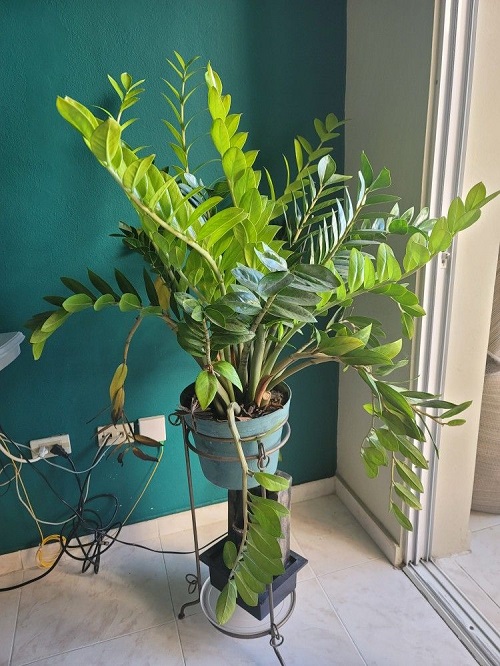
An often overlooked aspect of growing a ZZ plant – pot size can be the reason why your succulent isn’t growing upright. A pot too small does not give the plant any room to grow and constricts root expansion. On the other hand, an overly large container can lead to soggy soil issues.
Solution
Depending on the maturity and size of the plant, selecting the right pot size is crucial. Try going for a container that is 1-2 inches wider in diameter than the current root ball size. Also, repotting must be done at the appropriate time to avoid adding any unnecessary stress to the plant.
5. Plant Calls for Fertilization

Sometimes the soil is unable to provide a sufficient amount of nutrition to the plant. This may be due to overuse or imbalanced mineral content. Here, the only way to make up for the lack of nutrients is to supplement the soil with appropriate fertilizers.
Solution
In most cases, a balanced, liquid fertilizer of NPK ratio 10:10:10 diluted to half its strength will take care of the plant. However, if you want to take a more scientific approach, you can test your soil and accordingly choose a fertilizer with the desirable NPK ratio or micronutrients. Feed the plant once a month during the active growth period.
6. Pests Sucking the Life out of Your Plant
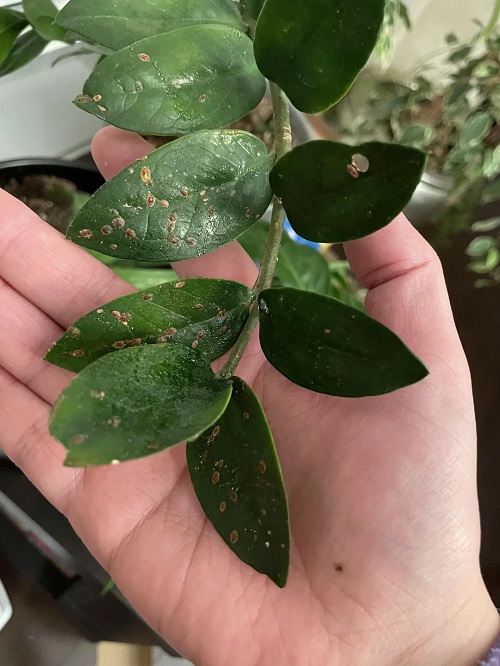
Although the ZZ plant is resistant to most pest attacks, some, such as scale insects, can pose an issue. They suck the sap and damage the plant’s structure, causing it to fall over or bend.
Solution
Prevention is always better than cure; therefore, it would be wise to keep an eye out for early symptoms of an infestation. If you see small insects, webbing, or trail marks on your plant, spring into action by spraying an organic pesticide such as neem oil onto the plant.
You can even set up sticky traps or plant natural repellent companion plants to avoid the problem completely.
7. Crumbling Under Its Own Size
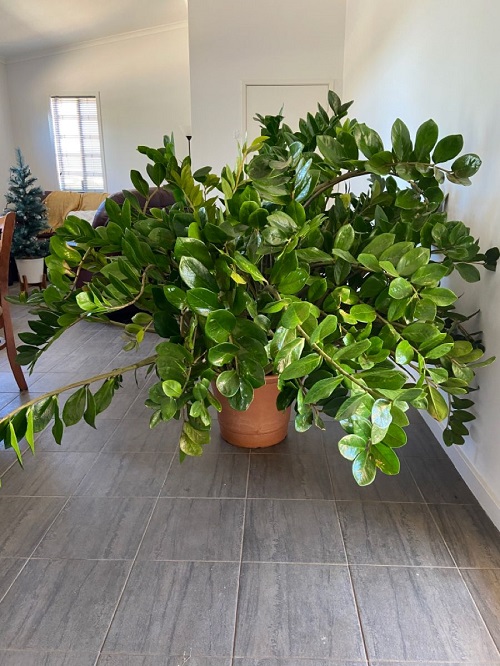
Finally and the most common reason for a tilted ZZ plant is an overgrown one! Indoors, they can grow up to be 4 feet in height, and due to this, the stem comes under immense pressure and gives in by bending.
Solution
There are two ways to solve this issue. You can either get rid of the extra weight by pruning off old, overgrown foliage, or you can install trellises or stakes to guide the plant to have a more erect form. Note that pruning must be done just before the active growing season.
Bonus Tip: Correct Planting Depth Matters
If the plant is planted too shallow, it becomes top-heavy and leans. While repotting, make sure the rhizomes sit just below the soil surface to anchor the plant well. Firm the soil gently to stabilize the base.
Now that you know everything there is to the causes and fixes of a bending ZZ plant, tell us which other plants are a pain in the neck that you would like to straighten out!







